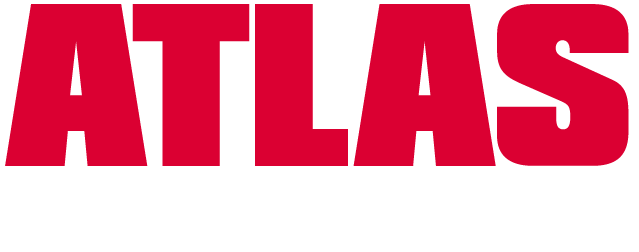Refrigerated Dryers 101
Refrigerated air dryers remove moisture from compressed air systems to protect equipment, improve efficiency, and ensure clean, dry air for reliable performance.
What is a Refrigerated Dryer and How Does it Work?
Key Concepts and Principles
Cooling and Condensation
The core principle behind a refrigerated air dryer is cooling the compressed air to a temperature where moisture condenses. As warm, moisture-laden air enters the dryer, it passes through a refrigeration circuit that chills the air, allowing water vapor to condense into liquid form for removal.
Heat Exchange Process
Refrigerated dryers use a heat exchanger system to efficiently transfer heat. Incoming warm air is pre-cooled by outgoing dry, cold air before it enters the refrigeration circuit. This exchange improves energy efficiency and ensures stable air temperatures leaving the dryer.
Moisture Separation and Drainage
Once moisture condenses, it’s separated from the airflow in a moisture separator. An automatic drain valve then removes this liquid condensate from the system, preventing it from re-entering the air stream or damaging downstream equipment.
Types of Refrigeration Systems
Refrigerated dryers typically operate in two forms: cycling and non-cycling systems. Cycling dryers adjust compressor operation based on demand to conserve energy, while non-cycling dryers run continuously to provide consistent air drying performance.
Efficiency and Performance
The overall performance of a refrigerated dryer depends on factors such as:
- Inlet Air Temperature and Pressure: Higher temperatures and pressures increase moisture load.
- Ambient Conditions: Warm or humid environments can affect cooling capacity.
- Refrigerant Type: Modern dryers use eco-friendly refrigerants for efficiency and environmental compliance.
- Heat Exchanger Design: Advanced designs maximize moisture removal while minimizing energy use.
Applications of Refrigerated Dryers
Refrigerated air dryers are essential across many industries that rely on clean, dry compressed air for reliable operation and product quality. Their ability to efficiently remove moisture makes them a standard in countless applications:
Manufacturing
In general manufacturing, refrigerated dryers protect pneumatic tools, valves, and equipment from corrosion and moisture buildup. They help maintain consistent air quality, extending the lifespan of machinery and reducing unplanned downtime.
Food and Beverage
Clean, dry air is critical in packaging, bottling, and conveying systems where product contamination cannot be tolerated. Refrigerated dryers ensure that compressed air used in contact or near-contact applications remains free from moisture and bacteria growth.
Automotive
In automotive plants, refrigerated dryers support painting, coating, and assembly processes by providing moisture-free air that ensures smooth finishes and precise tool performance.
Pharmaceuticals
Pharmaceutical production requires stringent air purity standards. Refrigerated dryers help meet these requirements by preventing condensation that can lead to contamination in sensitive environments.
Electronics
Electronics manufacturing depends on controlled environments. Refrigerated dryers supply moisture-free air for circuit board assembly, testing, and cooling processes, protecting delicate components from corrosion and short-circuiting.
Metal Fabrication and Welding
Moisture in compressed air can cause rust, pitting, or weld imperfections. Refrigerated dryers ensure stable air quality for plasma cutting, painting, and tool operation, improving the integrity of finished products.
Packaging
Automated packaging lines rely on pneumatic systems that demand dry, consistent air to maintain speed and accuracy. Refrigerated dryers help prevent system malfunctions and reduce maintenance frequency.
Utilities and Power Generation
Refrigerated dryers provide reliable air for control systems, instrumentation, and power plant operations where stable performance and safety are critical.
Woodworking
In woodworking operations, moisture-free air prevents swelling or warping of finished surfaces, ensuring smoother application of stains, sealants, and coatings.
Advantages of Using Refrigerated Dryers
Consistent Air Quality
Refrigerated dryers deliver a dependable supply of clean, dry air, preventing moisture-related damage to tools, valves, and finished products.
Low Operating Costs
Their simple refrigeration-based design requires minimal energy compared to other drying technologies, making them a cost-effective solution for most applications.
Minimal Maintenance
With few moving parts and straightforward operation, refrigerated dryers are easy to maintain and feature long service intervals, resulting in lower downtime and reduced labor costs.
Stable Dew Point
They provide a steady dew point - typically between 35°F and 50°F - ideal for most general industrial applications where ultra-low moisture levels are not required.
Easy Installation
Compact, self-contained systems make refrigerated dryers simple to integrate into existing compressed air setups with minimal piping changes or installation time.
Reliable Performance
Built for continuous duty, refrigerated dryers maintain steady operation in varying load conditions, ensuring dependable air quality in demanding environments.
Energy-Efficient Options
Modern models feature cycling technology that automatically adjusts refrigeration compressor activity based on air demand, conserving energy and lowering utility costs.
Conclusion
Refrigerated air dryers play a vital role in keeping compressed air systems efficient, reliable, and moisture-free. From food processing to manufacturing and beyond, they help extend equipment life, improve product quality, and reduce maintenance costs.
Ready to find the right refrigerated dryer for your system?
Contact our team today!
